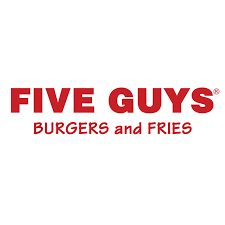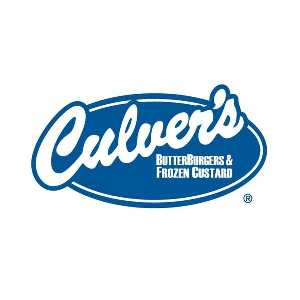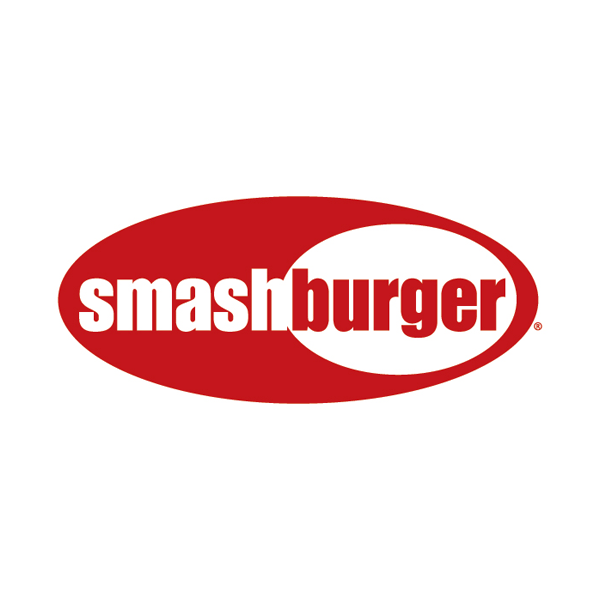In-n-Out Franchise in 2025: Costs, Fee & FDD
Explore In-N-Out’s iconic fast-food journey, from its 1948 origins to becoming a beloved brand known for quality and customer satisfaction. Learn about the costs and potential returns if In-N-Out ever decides to franchise.
Table of Contents:
Founded in 1948 by Harry and Esther Snyder in Baldwin Park, California, In-N-Out has carved out a unique niche in the fast-food industry. It is important to note that In-N-Out does not franchise at this time, and thus does not produce a Franchise Disclosure Document (FDD). As one of the first drive-thru hamburger stands in California, In-N-Out has remained a family-owned business, ensuring its operations stay true to the founders’ original vision. Known for its commitment to quality, simplicity, and customer satisfaction, In-N-Out has become an iconic brand in the western United States.
In-N-Out’s menu is refreshingly simple yet immensely popular. The core offerings include fresh, never-frozen hamburgers, hand-cut fries, and shakes made with real ice cream. These items cater to a broad customer base ranging from teenagers to families, all of whom appreciate the high-quality, delicious food at reasonable prices. Ancillary products such as their “secret menu” items like Animal Style burgers and fries add an element of exclusivity and fun, further enhancing the customer experience.
As of today, In-N-Out operates over 350 locations across the United States, primarily in the western and southwestern regions, including California, Nevada, Arizona, Utah, Texas, and Oregon. The chain serves thousands of customers daily, maintaining a loyal and growing customer base. Despite its regional presence, In-N-Out’s reputation extends nationwide, often attracting visitors from outside its operating states who are eager to experience its legendary offerings.
Several unique aspects set In-N-Out apart from fast-food franchise competitors. Their commitment to quality is unparalleled, with fresh ingredients delivered daily to each location. Additionally, In-N-Out pays its employees higher wages than many competitors, leading to exceptional customer service and a high retention rate. The brand’s emphasis on a clean, welcoming environment and its refusal to franchise or go public further ensures a consistent, high-quality dining experience. These elements collectively contribute to the enduring popularity and cult-like following of In-N-Out.
In-N-Out Franchise Insights
- In-N-Out has a dedicated following thanks to its “secret menu,” which includes items like the Animal Style burger and fries, enhancing the dining experience with unique and customizable options.
- The chain is renowned for its commitment to using fresh, high-quality ingredients, including never-frozen beef patties and hand-cut fries, setting it apart from many other fast-food competitors.
- In-N-Out pays its employees well above the industry average, resulting in excellent customer service and high employee retention rates, which contribute to a consistently positive customer experience.
- Despite its regional presence, In-N-Out has a cult-like following across the country, often leading to long lines and wait times at its locations, a testament to its widespread popularity and brand loyalty.
- The company remains privately owned by the Snyder family, ensuring that all decisions are made with a focus on quality and customer satisfaction rather than shareholder profits, maintaining the brand’s original values and vision.
How much does it cost to open a In-N-Out franchise?
Understanding the potential investment size and capital requirements is crucial when considering opening an In-N-Out franchise. While it is not currently possible to become a franchisee of In-N-Out, you can still see the costs to open up a new In-N-Out location for if and when In-N-Out decides to franchise. These financial commitments, including equipment costs, and ongoing operational expenses, impact the feasibility and profitability of the venture. Thoroughly evaluating these factors ensures that potential franchisees are prepared for the financial responsibilities and can make informed decisions about their ability to sustain and grow the business, ultimately contributing to long-term success.
Min & Max Investment
Opening an In-N-Out location involves several key costs. As In-N-Out does not produce an up to date Franchise Disclosure Document (FDD), we can estimate the costs for a In-N-Out based on public filings and analysis. The costs to open up a new In-N-Out location are estimated to be between $618,560 to $2,012,100. The lower costs are expected for smaller location conversions and the higher costs are expected for new and larger locations.
| Type of Expenditure | Minimum Investment | Maximum Investment |
|---|---|---|
| In-N-Out Franchise Fee (if they franchised) | $40,000 | $40,000 |
| Real Estate Purchase or Lease | may vary substantially based upon the location | may vary substantially based upon the location |
| Leasehold Improvements | $388,100 | $1,220,800 |
| Furniture, Fixtures and Equipment | $43,400 | $206,900 |
| Signane | $5,500 | $34,700 |
| IT, POS System | $21,900 | $49,500 |
| Three Month's Rent | $15,500 | $75,600 |
| Security Deposit, Business Licenses | $1,560 | $50,000 |
| Opening Inventory and Supplies | $15,000 | $20,000 |
| Grand Opening Advertising | $10,000 | $10,000 |
| Training Expenses | $34,000 | $181,700 |
| Grand Opening Assistance | $0 | $30,000 |
| Miscellaneous Opening Costs | $500 | $5,000 |
| Professional Fees | $5,000 | $15,000 |
| Insurance Premiums - 3 Months | $10,000 | $20,000 |
| Liquor Licensing | $1,600 | $11,400 |
| Lease Review Fee | $1,500 | $1,500 |
| Additional Funds - 3 Months | $25,000 | $40,000 |
| Total | $618,560 | $2,012,100 |
Required Capital
Since In-N-Out does not currently franchise in the U.S., there are no official figures for the required capital, liquid assets, and net worth to open a In-N-Out franchise. However, based on industry standards for similar fast-casual restaurant franchises, we can provide some estimates for if and when In-N-Out does decide to franchise in the U.S.:
Initial Investment: Typically, opening a fast-casual restaurant can require an initial investment ranging from $500,000 to $2 million, depending on location, size, and build-out costs. This estimate includes costs for real estate, equipment, initial inventory, and other startup expenses.
Liquid Assets: For similar franchises, it is common for franchisors to require potential franchisees to have liquid assets of at least $250,000 to $500,000 to ensure they have the necessary funds to cover initial and ongoing operational costs.
Net Worth: A net worth requirement for comparable fast-casual franchises might range from $1 million to $2 million, ensuring that the franchisee has sufficient financial stability and resources to sustain the business.
These figures are estimates based on industry standards and may not reflect In-N-Out’s actual requirements if they ever decide to franchise in the future.
How much does an In-N-Out franchise owner make?
While In-N-Out is not currently franchising in the U.S., it helps to know how much a potential In-N-Out franchise owner would make for if and when they decide to franchise. Calculating the salary of a hypothetical In-N-Out franchise owner involves analyzing gross sales to determine total revenue, assessing operational efficiency to understand profit margins, and accounting for franchisor fees and additional expenses such as rent, utilities, and payroll. Effective management of these factors can significantly impact the profitability and financial success of a potential In-N-Out franchise owner. This comprehensive financial analysis helps estimate net profits, from which the owner’s salary can be derived. A clear understanding of these factors ensures accurate salary projections and financial planning for sustainable business operations.
In-N-Out Revenue & Gross Sales
As of 2024, In-N-Out’s locations achieved an estimated average gross sales of $4,500,000, which places In-N-Out among the highest performing average unit volume (AUV) fast food concepts in the U.S. This strong financial performance underscores the brand’s robust consumer demand and potential for lucrative returns for In-N-Out.
Which key factors impact the average revenue performance of In-N-Out locations?
Several key factors contributed to the growth of In-N-Out’s U.S. average gross sales revenue in the most recent year.
First, the chain’s unwavering commitment to quality ingredients and customer service has cultivated a loyal customer base that drives repeat business. Second, strategic geographic expansion into new markets, particularly in the southwestern United States, has broadened its customer reach. Additionally, the introduction of the “secret menu” has created buzz and encouraged frequent visits from devoted fans. Lastly, effective marketing and a strong brand reputation have consistently attracted new customers, while word-of-mouth recommendations and social media presence have amplified its visibility and appeal.
In-N-Out Franchise Operational Costs
Although In-N-Out does not franchise, understanding the key primary ongoing operational costs can still provide valuable insights into the financial aspects of running a similar fast-food business. Here are the primary costs to consider:
- Food and Beverage Costs The cost of ingredients such as fresh beef, vegetables, buns, fries, and beverages, which need to be consistently high quality to meet brand standards. In-N-Out has food costs that are a little above its competitors due to never freezing their beef.
- Labor Costs Wages and benefits for employees, which are typically higher than industry average to maintain excellent customer service and retention.
- Rent and Utilities Leasing or renting the restaurant location, along with utility costs like electricity, water, and gas.
- Equipment and Maintenance Expenses for kitchen equipment, dining area furnishings, and regular maintenance to keep everything in optimal working condition.
- Marketing and Advertising Costs associated with local advertising, promotions, and maintaining a strong brand presence in the community.
- Insurance Premiums for property, liability, and workers’ compensation insurance to protect the business and its employees.
- Supplies Ongoing purchase of non-food supplies, including packaging materials, cleaning supplies, and uniforms.
- Licensing and Permits Fees for necessary business licenses, health permits, and any other regulatory requirements.
These costs are crucial to consider for maintaining smooth operations and achieving financial success in the fast-food industry.
In-N-Out Franchise Fees
Since In-N-Out is not a franchise, it does not have any franchise fees. In-N-Out does not charge any franchise fees because it operates as a wholly corporate-owned chain rather than a franchise. This means that all In-N-Out locations are owned and managed by the corporate entity rather than by individual franchisees. By maintaining direct control over all its restaurants, In-N-Out ensures consistency in quality, service, and operational standards across all its locations. This corporate structure allows In-N-Out to implement its business strategies uniformly and maintain a strong brand identity without relying on external franchise operators
In-N-Out Location Earnings
The earnings of an In-N-Out can vary significantly based on a variety of factors including location, sales volume, operational efficiency, and cost management. However, on average, In-N-Out can expect to earn a significant income on a per location basis.
In-N-Out locations have an average gross sales of $4,500,000. Based off of the average gross sales and an average restaurant operating margin of 20%, we can estimate an average In-N-Out location makes $900,000 in estimated earnings (EBITDA) per year. Note that if In-N-Out were to franchise, then an In-N-Out owner’s earnings would likely be $900,000, assuming that they worked in the business as a manager.
How to Open an In-N-Out
In-N-Out is a family-owned and operated company that has chosen not to franchise its operations. This decision allows the company to maintain strict control over quality, consistency, and customer service across all its locations. Therefore, it is not possible to become a franchisee of In-N-Out.
However, if you are interested in becoming the general manager of an In-N-Out restaurant, here are the steps typically involved:
1. Start at an Entry-Level Position
Most general managers at In-N-Out begin their careers in entry-level positions, such as a cook or cashier. This allows them to learn the company’s operations from the ground up.
2. Gain Experience and Training
In-N-Out places a strong emphasis on internal promotion. Employees are encouraged to take advantage of the company’s extensive training programs, which cover everything from food preparation to customer service and management skills.
3. Demonstrate Leadership and Performance
As you gain experience, it is important to demonstrate strong leadership qualities, excellent performance, and a commitment to the company’s values. In-N-Out looks for individuals who can motivate and manage a team effectively.
4. Advance to Supervisory Roles
Successful employees are often promoted to supervisory roles, such as Shift Manager or Assistant Manager. These positions involve increased responsibility and provide valuable management experience.
5. Pursue Further Promotions
With continued dedication and strong performance, you can be promoted to higher management positions, eventually leading to the role of General Manager. In-N-Out’s General Managers are responsible for overseeing all aspects of restaurant operations, ensuring high standards of quality and service are maintained.
6. Stay Committed to Continuous Improvement
Even as a General Manager, ongoing training and development are crucial. In-N-Out encourages its managers to continue learning and improving their skills to ensure the best possible experience for both employees and customers.
By following these steps, dedicated employees can work their way up to become a General Manager at In-N-Out, enjoying a rewarding career with a company known for its strong commitment to quality and employee satisfaction.
Pros & Cons to Opening a New In-N-Out Location
Pros:
Strong Brand Loyalty: In-N-Out has a loyal customer base that frequently drives high sales and consistent revenue.
Quality Control: Maintaining strict quality standards ensures a superior product that differentiates In-N-Out from competitors.
Employee Satisfaction: Competitive wages and benefits lead to high employee morale and retention, which translates to better customer service.
Efficient Operations: A streamlined menu and efficient operations help maintain consistency and reduce complexity.
Market Demand: The brand’s popularity and reputation often create significant demand, resulting in high foot traffic and long lines.
Reputation for Excellence: The company’s strong reputation for quality and service bolsters community acceptance and customer trust.
Cons:
High Initial Investment: The cost of setting up a new location can be substantial, including real estate, construction, and equipment.
Operational Challenges: Maintaining high-quality standards requires rigorous training and oversight, which can be resource-intensive.
Market Saturation Risk: Opening too many locations in close proximity could dilute the brand and reduce individual store profitability.
Supply Chain Management: Ensuring fresh, high-quality ingredients are consistently available can be challenging, especially in new markets.
Labor Costs: Competitive wages and benefits increase operational costs, potentially impacting profit margins.
Economic Sensitivity: Like all businesses, new locations are subject to economic fluctuations and changes in consumer spending habits.





